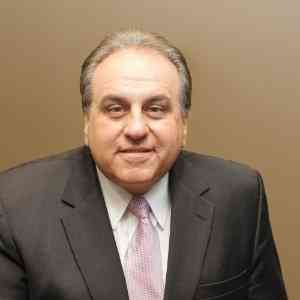Need support?
Call us and get support from one of our advisors.
Call for Free 877-403-8834You may have noticed there is a difference between the way we hear our voice and how others hear it. This happens because when we speak, the sound comes out of the mouth and goes up the sides of our face, hitting the ears directly and making us feel the internal vibrations in the ear and the head.
We talk about autophony when a person can hear their own voice too loud or echoing in the ears. Autophony also involves the perception in the ears of all the other noises that come from one's body, such as one's breathing and heartbeat.
Autophony usually results from diseases of the middle ear, especially in the case of the patulous or intermittent function of the Eustachian tube. Other causes may include eardrum occlusion, otitis media with effusion or Superior canal dehiscence syndrome (SCDS). Let's review them in detail.
The physical disorder known as Patulous Eustachian Tube (PET) indicates an atypical and chronic alteration or intermittent function of the physiological mechanism of opening and closing the Eustachian tube that keeps the Eustachian tube open.
Patulous Eustachian Tube is a condition that is rarely recognized: it mainly affects women, affects only one ear and is characterized by a sensation of a clogged ear, intermittent hearing loss and autophony, the hearing of self-generated sounds.
While autophony itself is not typically dangerous, it can be bothersome and affect quality of life. In some cases, it may be a symptom of a more serious underlying condition that requires treatment.
Therefore, if you experience persistent or bothersome autophony, it's advisable to consult an ear, nose, and throat (ENT) specialist for a thorough evaluation and appropriate management.
Autophony occurring in just one ear can result from unilateral issues like Eustachian tube dysfunction, specific middle ear conditions, or structural abnormalities.
These factors can disrupt sound conduction and perception in one ear more than the other, leading to the perception of louder internal sounds. While not always serious, evaluation by an ear specialist is recommended to determine the cause and appropriate treatment.
Symptoms of autophony, where internal sounds are perceived louder than normal, include:
If these symptoms persist or worsen, seeking evaluation from a healthcare professional, particularly an ear specialist, is recommended for proper diagnosis and management.
Autophony, where one hears their own voice or internal sounds louder than usual, can come and go due to fluctuations in Eustachian tube function or middle ear conditions.
These variations can be influenced by factors like allergies, sinus issues, or changes in atmospheric pressure. While intermittent autophony may not always indicate a serious issue, persistent symptoms should be assessed by a healthcare professional for proper evaluation and management.
Autophony can sometimes occur after an ear infection. This is often due to lingering effects such as:
Autophony after exercise can be attributed to several factors:
Autophony can be treated in different ways, depending on its causes and severity. The less invasive treatments are applied in case of mild symptoms and consist of some practical advice and actions to be performed during the day like:
However, autophony can also be severe with a degenerative course. The treatments recommended in this case are more invasive and can include surgery for a definitive solution to the disease. Whatever the origin of the problem, it is best to see a physician if this condition should persist.
Home remedies for autophony, where internal sounds are perceived louder than normal, can include:
While these home remedies may provide relief for mild cases of autophony, it's essential to consult with a healthcare professional if symptoms persist or worsen. They can evaluate the underlying cause and recommend appropriate treatment options tailored to your specific condition.
Autophony can go away with the right treatment playing a fundamental role in its resolution. It is possible to recover from this disease and its symptoms, which can disappear once treated, but it’s fundamental to identify the specific cause. Autophony can be treated by treating the specific disease that caused it or by removing the occlusion that causes this symptom (phlegm, foreign object, etc.)

.tif/jcr:content/renditions/cq5dam.web.700.700.jpeg)